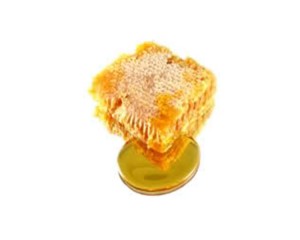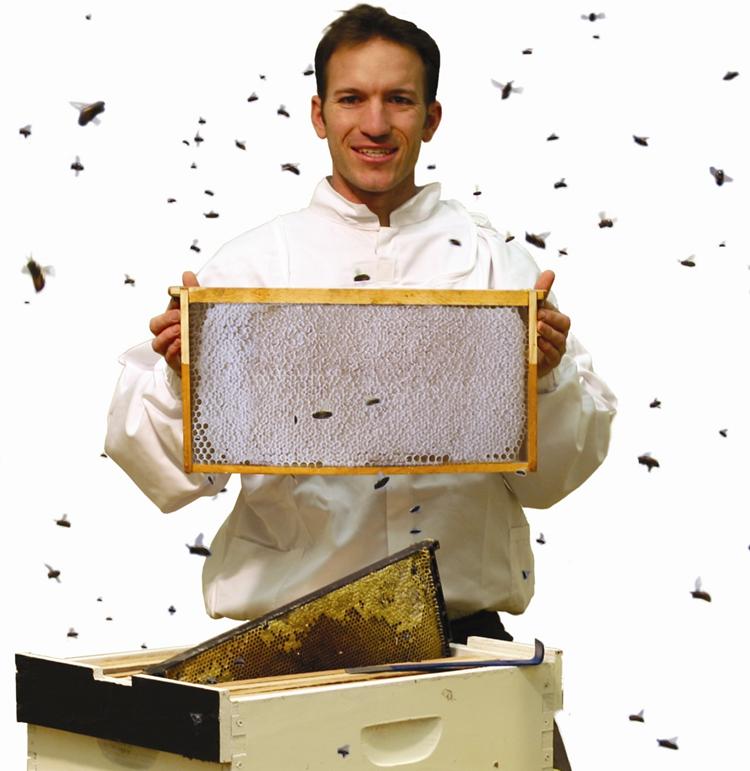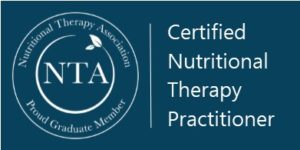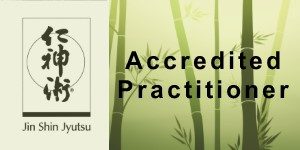This is a guest post by Prenten Frazier of Beehive Condo Co-op.
I am a beekeeper, one in line of a long history of beekeepers. My great-great-great grandfather Benjamin F. Johnson maintained hundreds of beehives early on in Utah history. I am privileged to follow in these foot-steps and I enjoy speaking to interested individuals about the magic of bees. I consume roughly 60 lb of honey per year. This is a surprise to some people; however, studies show the average American diet equals that much in refined sugars so I am still average.
Honey is one of the purest forms of food on the planet. It is a super food! I love honey and all bee products. I believe that these must be consumed truly raw and naturally for optimal health benefits. I have drawn away from the habit of calling honey an alternative sweetener. An alternative sweetener is what I use when no honey is available. I am also convinced that truly raw honey is virtually non existent commercially.
Is Sugar Bad?
As a child, I was fascinated by the movie Charlie and The Chocolate Factory. I imagined eating sweets to my heart’s content without adult regulation. It was a fantasy never to be realized because, of course, adults say sugar is bad for you (even though it sure does make things taste good). Mary Poppins sides with kids by saying that a spoonful helps the medicine go down. Critics say “if it tastes good, it can’t be good for you.” As a grown-up, I challenge that belief. I love sugar and so the child in me wants to know if good for you could possibly mean taste good too.
As a result of my quest I stumbled across some good news and some bad news. Want the good news first? OK, here it is. Guess what: sugar is good for you! Not only is sugar good for you, it is your body’s primary fuel. The main source of this is glucose found concentrated in table sugar, grains, fruits, honey and more complexly in dairy and meat which require more energy to break down into the simple sugars the body can use.
Every day your body must burn a lot of energy. Your brain and nervous systems are particularly demanding; they use 70% of all the energy you metabolize.
All food originates as energy from the sun. Carbon is converted into sugars through photosynthesis in plants; these are eaten by herbivores which become sirloin steaks on the plates of carnivores. Different creatures utilize special enzymes, bacteria, and proteins to help break down and obtain energy from the food they eat. Still, in the end, it is the same stuff that feeds us all (sugar). I don’t mean to insult anyone’s intelligence with a basic lesson on the circle of life. I only mention how happy it made me to finally understand the truth about sugar. It is not evil.
The “R” word
Now for the bad news. It’s a fact of life that too much of anything is a bad thing. Especially when you use the “R” word (refined). This is only one reason why soda pop is considered junk food. Not to mention other adulterous refined chemicals and preservatives at the top of modern day abominations attacking the virtues of health and wellness.
Ever notice how Hyperglycemia in healthy individuals is not attainable eating too many natural foods? Nature combines proper balances of sugar in fruits and greens together with high moisture and fiber content. This is not the case with maple syrup or cane sugar which has been extracted and concentrated. Once the protective barriers are gone, suddenly too much is possible.
Refined sugars are a negative energy. They seek positive energies in an attempt to neutralize (like osmosis). Those who bottle fruit with honey know that it stays firmer compared to fruits bottled with refined sugar. This is because refined sugars draw out the contents of the fruit turning it to mush. Its contribution as a source of energy is largely counteracted by its demand for energy. There are limited minerals in honey but the content insures that it will give, and not take, nutrients from the body. Honey is easily absorbed by the liver where it needs to be stored. That which does end
up in the blood stream requires very little effort on the part of the system to digest.
Refined sugar is confusing to the body. It releases large amounts of endorphins in the pleasure senses of the brain. Your body can’t figure out what the problem is because all this sugar coming in gives off an “OK TO PASS” signal and is appreciated. So now the pancreas kicks into overdrive to deal with it. When metabolic stress occurs, the body pleads for something to re-attain homeostasis. This is when you need a glass of water.
It is no wonder Big Gulp sodas have reached main stream popularity. You get a sugar-water burst of energy that makes you feel good all in one cup. Then when the burn is all gone the brain says “whew…let’s do that again”. Its effect on the body is addictive and can cause hyperactivity especially in children. Healthier sweeteners are those which are natural, unprocessed, and still contain all the nutrients. For this reason, honey is a popular choice.
So what is honey and how is it unique from all other sweeteners
Ask anyone what honey is and most believe it is a natural alternative sweetener. Taste a little on your finger and your tongue tells you it must be sugar. Ironically, raw natural honey acts more like a fruit and is virtually impossible to develop an addiction or unhealthy craving for. At any rate it does not take much to satisfy a sweet tooth. As an avid consumer of honey, I experience fewer cravings but these cravings only occur when I come in contact with some of my favorite brands of commercially available junk food. Never with honey!
My purpose here is to focus primarily on the health benefits of raw natural honey. To build my case, I have compared honey to other sweeteners. You will notice that many of these sweeteners occur naturally in honey.
Different types of sugars/ sweeteners
-Nectar
Nectar is made by plants in the leaves and stored in the roots, and stems as food. Plants that excrete their nectar externally so as to attract honey bees are considered melliferous. These plants are willing do so in exchange for pollinating services rendered them by hungry bees. After pollination has occurred the nectar is no longer made available to visitors but stored up inside growing fruit.
Nectar contains minerals, nutrients, and aromas from the flower or plant it comes from. This is evident by the many varieties and flavors of honey. All sugars/ sweeteners could be considered nectar since they are produced by plants, stored in the stems leaves, fruits or roots, and are extracted as a syrup or juice. This is the case with corn extract, sugar cane, sorghum, Stevia, maple syrup, etc.
Nectar (sugar) can therefore be considered the largest crop in the world. Man is able to extract nectar from many sources. Bees, however, are man’s only tool for obtaining it in the nectaries of the flower. If we were able to extract nectar from flowers using machines it would not be honey.
-Sucrose
Table sugar is pure sucrose and is refined from sugar cane or beets. It is the bonded combination of both dextrose and fructose monosaccharides. Raw sugar cane is healthier to eat and has fiber. Take a bite of raw sugar cane and you feel like you are chewing a really sweet carrot. Squeeze the juice out and now it is mostly water but aside from the sugar content, it also contains traces of calcium, iron, potassium, and sodium. Cane has been used for centuries. Before the dawn of diet born disease, it was mostly used by rich people and eaten organically. It has only been refined to its classic form of white table sugar since more recent history. Sucrose naturally makes up about 1% of honey.
-Dextrose
Dextrose, also known as glucose, is one of the primary byproducts of photosynthesis. It is nature’s primary energy fuel and starts cellular respiration. The body absorbs glucose from foods and stores it in glycogen chains for ready fuel. When the body runs dangerously low on this fuel it secretes the hormone cortisol which breaks down the body’s proteins into amino acids; the basic building blocks for constructing glycogen. This phenomenon usually happens in the night fast since during the day the feeling would cause you to eat. Dextrose makes up about 31% of honey.
-Fructose
Fructose, known as levulose, is what gives fruit its sweetness. In nature, fructose is usually found together with glucose in near equal portions. This is especially the case with honey. High fructose corn syrup is made by combining the glucose and fructose monosaccharide synthetically with a higher concentration of fructose. Fructose is required by the body; mostly by the liver for the synthesis of glycogen. Refined concentrations prevent the liver from normal healthy function. The fibers in raw fruit prevent fructose from being absorbed too quickly when eaten. Because of its predigested
state, however, fiber is not required in honey. Fructose makes up about 38% of honey.
-Maltose
Maltose is basically a double helix of glucose; formed when amylase breaks down starch. Metabolism of maltose by yeast during fermentation leads to the production of ethanol and carbon dioxide. This happens when honey spoils. Maltose makes up about 7% of honey.
-Corn syrup
Corn syrup is mainly produced by adding the enzyme amylase to a mixture of corn starch and water. Also known as glucose or invert syrup, it can be made from a variety of starchy plants using the same process. Honey essentially becomes nothing more than invert syrup when it is heated and filtered. Unfortunately this is close to what most commercial honey is.
-Molasses
To make molasses, the cane of a sugar plant is extracted & boiled to concentrate it. The super-saturated syrup then promotes the crystallization of the sugar. After the crystals are removed, a second boiling and sugar extraction, followed by a third boiling of the sugar syrup makes blackstrap molasses. The majority of sucrose from the original juice has been crystallized and removed. The calorie content of blackstrap molasses is still mostly from the small remaining sugar content. However, unlike refined sugars, it contains trace amounts of vitamins and significant amounts of several minerals. Molasses is a source of calcium, magnesium, potassium, and iron; one tablespoon provides up to 20% the daily value of each of those nutrients.Blackstrap has long been sold as a health supplement.
-Maple syrup
In cold climates, the maple tree stores starch in the trunk and roots before winter. In spring the starch converts to sugar that rises in the sap. Maple trees can be tapped by boring holes into their trunks and collecting the sap. Commercially, maple syrup is mostly flavored invert sugar and not from the maple tree at all. When a product claims to be real maple syrup, it is often treated by reverse osmosis to remove water and particles before being boiled into a concentrate. Only pure maple syrup from a reputable source can ensure quality.
Perhaps, theoretically, maple syrup could be made raw, but an average of 40 gallons of sap must be dehydrated down to get 1 gallon of concentrate. This is quite impractical.
-Xylitol
This is a sugar alcohol sweetener used as a sugar substitute. It is found in the fibers of many fruits and vegetables, and can be extracted by hydrogenation of xylose, which converts the sugar (an aldehyde) into a primary alcohol. It is processed from various berries, oats, and mushrooms, as well as fibrous material such as corn husks. Xylitol is roughly as sweet as sucrose with only two-thirds the food energy. It is used to sweeten gum, toothpaste, and food of diabetics because of its low rate of absorption into the blood stream.
-Aspartame
An artificial methyl ester produced by the bacteria bacillus thermoproteolyticus. It is a non-saccharine and roughly 200 times sweeter than table sugar. Aspartame is sold as a powder under the brand name NutraSweet®, and can be found in chewing gum, soft drinks etc. The popular desire to utilize a low caloric sweetener but avoid a synthetic alternative has lead to a trendy switch to a more natural sweet leaf plant stevia.
-Stevia
The species stevia rebaudiana, also known as sweet leaf, is growing in popularity among health conservatives as a low calorie alternative to sugar. As a refined powder it is up to 300 times sweeter than sugar. The leaves have 30 – 45 times the sweetness of sugar and can be eaten fresh, or put in teas and foods. Most Stevia on the market comes heavily diluted with maltodextrin. Pure Stevia is about $100-$200/lb!
Honey is produced by the honey bee by consuming the nectars of flowers, bushes, and trees. Honey is primarily glucose and fructose and contains approximately 20 different lesser sugars as well as amino acids, trace minerals, yeast, and other nutrients. Bees can make honey from almost any sweetener provided by man when nectar is not available.
The greatest difference in honey is that it has been biologically processed by the bee stomach one step beyond any other sweetener. Honey is churned within the honey stomach of the bee and converted into a predigested food with the help of enzymes. No other sweetener is pre-prepared in such a manner by man or plant. It is designed to function as a true food for the benefit of the bee (humans get the benefit too).
How honey is made
First, nectar is lapped up by the bee and brought back to the hive. Whatever amount was not used to power its flight is then regurgitated into the mouth of a younger sister. This in turn is passed to another hungry sister. It is passed back and forth again and again so everyone can eat. This churns the honey with bee “saliva” until it is essentially pre-digested. It will eventually be completely digested unless there is more than enough to go around. When an excess of nectar is being brought it gets deposited for later. Bees spend a vast amount of effort seeing to the careful task of storing honey properly. It is important that their winter food supply is not a dead food but a living source of energy.
The extra good stuff
To conserve space and prevent spoilage, thousands of wings fan the nectar in the comb until the moisture content drops below 18%. The chemistry of invert sugar says this is not possible because at such low moisture content the honey now contains way more sugar than can possibly be dissolved by so little moisture. It should crystallize instantaneously. The honey, however, is kept runny by invertase (sucrase); an enzyme churned into the nectar by the bee to keep the honey runny. In the winter, this is very important because food is no good to a starving bee when it is frozen solid. The invertase is also what breaks down the polysaccharides in the nectar making it more easily digestible.
Diastase (or amylase) is also in the bee stomach which aids in the digestion of starches.
Honey contains yeast which comes from the bee’s summer stomach. Bees do not produce these important digestive strains of yeast in the winter so the honey is prepared to supplement this deficit. This yeast can come in many forms and is friendly to the human digestive system.
Then there is glucose oxidase (GOx) which provides the unique antibacterial properties of honey to name a few. GOx is a special enzyme dear to my heart because it gives the honey its alkalizing characteristics (PH typically between 3.5-4.5). The low moisture content and high PH of stored honey prevents it from spoiling. When honey is diluted and exposed to oxygen, it results in the formation of H202 (hydrogen peroxide). Virtually nothing can live or function in honey. This makes it an ideal application to cuts and scrapes preventing infection. When honey is used topically, hydrogen peroxide is produced by dilution of the honey with body fluids. The antioxidant constituents in honey help clean up oxygen free radicals present.
Years ago my father was extracting honey when he cut his finger to the bone. He covered the bleeding wound with honey (yes, sounds unsanitary). He quickly wrapped his hand in a paper towel, held it tight, and continued working. After an hour or so he took the time to address the wound. This was when he accidentally discovered honeys incredible ability to heal. There was no sign of the deep cut except for the topical surface layer in the dead skin. Since then we have successfully used it many times to treat wounds.
Not all honey is good
I have been telling you all the wonderful things about honey but I would like to express the fact that it is not common to find completely untouched honey. At least not after humans get done with it.
That’s right, most honey is refined!
The US only produces about 45% of its consumption needs of honey and the rest are imported. Honey is just not as easy to obtain as other sugar which can be mass-produced on farms. Bees can not be farmed as close together. A square mile can sustain a limited number of beehives and the US has a limited number of bee keepers.
There are two kinds of beekeepers; commercial growers and back yard hobbyists. The commercial beekeeper produces all the honey you find on store shelves; these businesses must maximize production and minimize cost. Money in beekeeping is mostly found in pollinating. Honey is seldom the priority to the commercial grower. Heating honey helps to greatly speed production and save cost. At least 60% of all honey is sold to manufacturers for pennies on the dollar and processed into baked goods.
The US does not actually hold an official definition as to what honey is. I know, it doesn’t make sense but when you get into commercial production, packaging and legal definitions become very complicated. To secure our honey, the USDA must define what can and can not be called honey.
In addition, the US currently has no provisions for regulating labels or products containing the word “honey.” A label that says 100% Raw Natural Organic Clover Honey from the Wild Hills of Canada could still get away with being little more than corn syrup diluted with 100% honey that is heated and filtered to prevent fermentation and crystallization. Crystallized or dark honey does not sell and retailers seek products which are the most appealing to the consumer.
I would not say business is done with harmful intent. I believe most processes of packaging honey are done naively; almost as if there was no other option.
I commend the few of those who do willfully protect the raw nature of honey. Truly it has to become a willful intent if it is to happen at all.
Popular extracting techniques incorporated by large beekeeping operations destroy all the valuable properties of honey by heat and/or high pressured filtration systems essentially turning valuable honey back into cheap corn syrup.
As you can see, the only honey not ruined in this country is essentially produced by the back yard beekeeper. That source, however, is not widely available to everyone.
If you can find raw honey, the next question is how sophisticated is the plant source. The best honey has a wide variety of plant nectars and pollens, is fully processed by the bees, and properly packaged by the beekeeper. The only true way to be sure of the honey’s quality is to know the beekeeper yourself.
Based on the strictest standards, honey should perhaps be considered truly raw only if it has been extracted cold (no artificial heat used.). It should also remain unfiltered; honey contains the synergistic balance of all its properties for a reason. Raw honey should be stored in glass or similar quality containers. The acids in honey will leech metals and plastic particles from containers. The wrong container will allow for absorption of outside moisture and odor. Also honey should be stored out of light to prevent darkening and at proper temperatures to preserve enzyme content. Honey remains perfectly unchanged for years if frozen. For immediate use, honey is kept at dark room temperatures (70-80 °F).
Commercially sold creamed honey is popular and is produced intentionally by mechanically whipping the honey with powered sugar crystals to promote rapid seeding. An ideal creamed consistency will most likely be attained naturally with raw honey if it is allowed to crystallize at proper temperatures (~ 57 °F). Certain varieties of honey naturally crystallize very quickly like alfalfa and clover. Clover is a popular flavor but if you see this sold commercially and it has not turned solid, you can be sure that it has been pasteurized and/or homogenized.
It no longer surprises me how many of my acquaintances have never actually tasted raw honey even though “honey” has been in their cupboard their whole lives.
Who else agrees with me?
There is a growing library of information and list of individuals who are exposing the misconceptions surrounding honey. Were it not for these people, I myself would still be in the dark. One great read I recommend altered my entire paradigm: “The Honey Revolution, Restoring the Health of Future Generations” by Dr Mike McKinnes MRPS, Ron Fessendon MD, MPH.
This great book will change the way you look at eating this super-food and will teach you how to fuel properly for exercise and sleep. It contains the latest research on honey and detailed explanations about its effect on the body. It also includes studies which suggest that chronic diseases including diabetes and obesity, to name a few, could possibly become a thing of the past using honey alone.
It must be strongly emphasized that in order for honey to work the way it is suppose to, it must be as completely raw and natural as possible.
I am up for the challenge
In conclusion I would like to point out that although my family runs a growing operation of 1,000 hives all along the foothills and canyons of the Wasatch front, we had to develop early on a distinct commitment to ourselves about the quality of honey we wanted to supply to our community. Of course this would have to be the same quality we ourselves want to eat. My pursuit of health and
nutrition has been a passion to me and my family for many years. This is important if we are to not become swept away by the tidal wave of commercial efficiency.
The difficulty in sticking with our conviction became evident when we set out to purchase extracting equipment. We had to reject parts that would be used to heat, pump, or filter our honey. It became clear how tempting it is for anyone to get caught up in these practices.
Utah’s mild dessert landscape of native plants separated from large agricultural space where pesticides are sprayed allows our bees to produce some of the best polyfloral honey available. Anyone so fortunate to keep a hive in this region should feel as lucky. Why should it not be kept raw and natural?
2012 beehive Condos co-op. www.beehivecondos.com
For more information on the benefits of joining Beehive Condo Co-op and to find pricing, visit their website or call (661) 412-3334 or email them at honey@beehivecondos.com.









